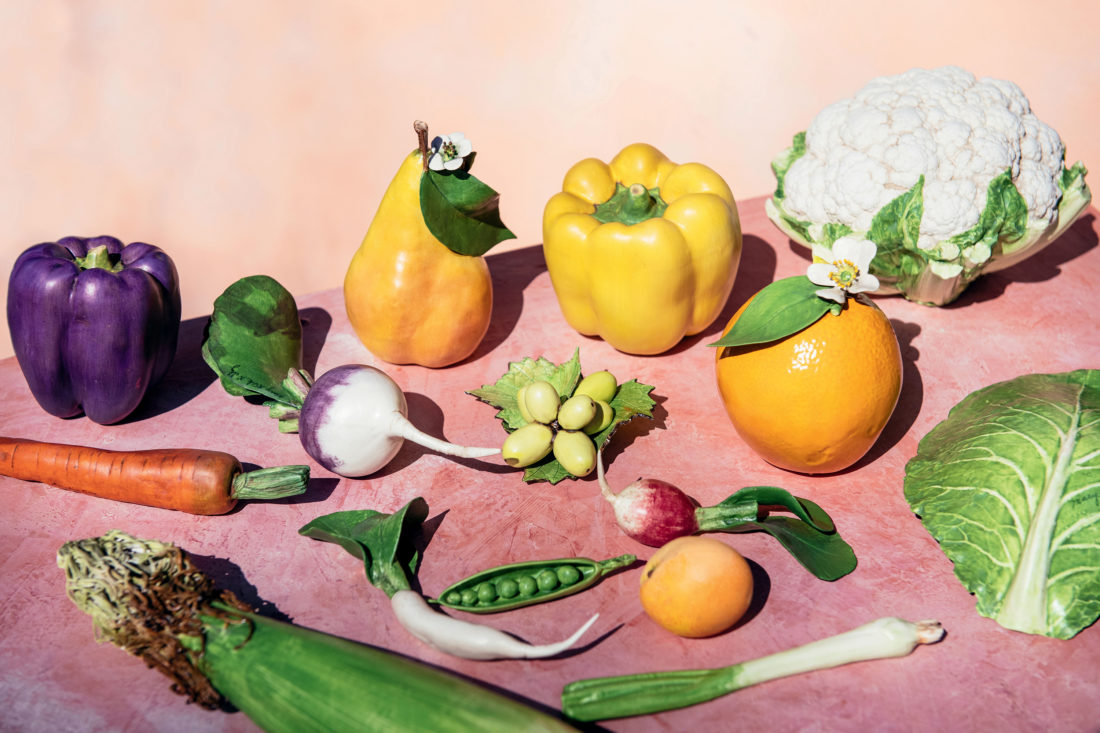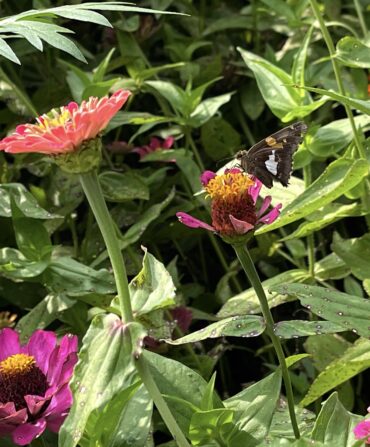Something about the ceramic turnip spoke to Lou Harris, an interior designer in Martinsville, Virginia. This was back in 1984, and Harris, who also owned a retail store, had just peered into the trunk of a traveling salesman’s Buick for a glimpse at a new china pattern. What caught her eye, however, was the purple-white taproot and its impossibly thin clay leaves captured just as they were starting to wilt. “I was struck by the imperfections,” she remembers. “In Renaissance paintings of fruit, you see some bruising or a fly on a peach, the slightest beginnings of decay. That turnip was so simple and true, like you just pulled the thing out of the ground and were about to eat it, like it wasn’t going to last very long.”
Thirty-five years later, Harris still marvels at the way the artist, the Alabama ceramist Mary Kirk Kelly, captured the moment of peak ripeness in kiln-fired, hand-painted clay. The turnip was the first—and remains the favorite—in Harris’s collection of Kelly’s ceramic fruits and vegetables, a cornucopia of four dozen or so pieces, ranging from squash to citrus.
Kelly’s ceramics work only began to flourish in her sixties, though she had a lifelong affinity for the rich clays of southern Alabama. Born in 1918, she grew up in Axis, where her father owned a plant that made bricks from local clays. When her own children were little, Kelly fashioned dishes and cups clawed from the banks of their favorite swimming hole on nearby Gunnison Creek. But it wasn’t until she retired from teaching, in the early 1970s, that she officially caught the ceramics bug. Her pots flopped, so she experimented with casting slip, or liquid clay, using molds. After a neighbor asked her to make a replica of a prized cabbage he’d grown, something clicked. By the 1980s, Kelly was making and selling hundreds of pieces each year from a workshop behind her Axis home.
Kelly continued molding and firing pieces almost until her death, in 2013, at the age of ninety-four. New Orleans Auction Galleries handled the sale of her estate, though her pieces can be found on eBay and at Yellow House Antiques & Interiors in Mobile. “My mother was tied to the South,” says her daughter Ruth Schmohl. “She grew up in a family that had kitchen gardens and raised persimmons. She was part of the earth.” And through a collection such as Harris’s, she still is.








